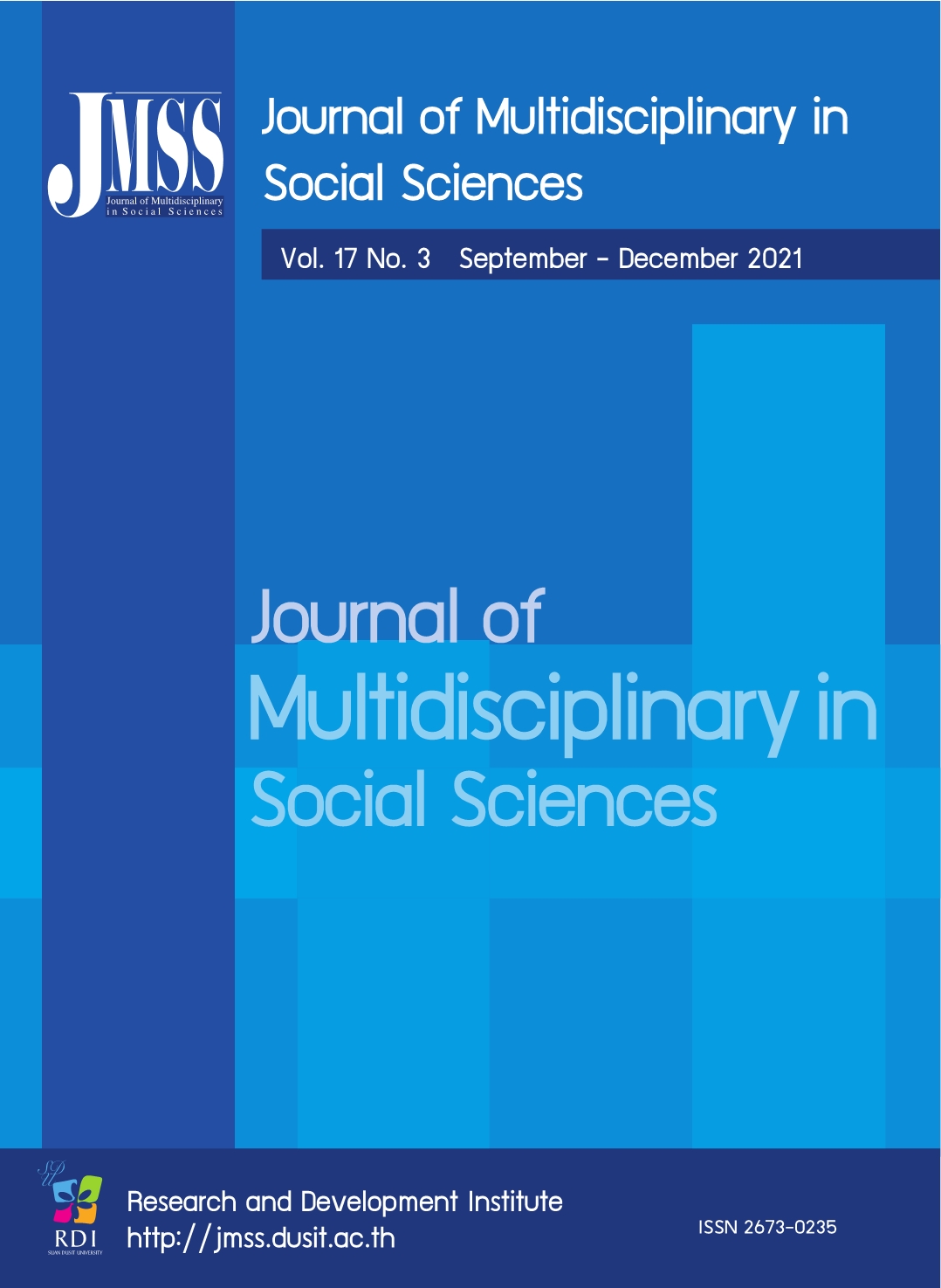Communication Identity of Muay Chaiya as Cultural Capital: The Fighting Spirit of the Tapee River Basin
Keywords:
Media, Identity, Cultural capital, Muay ChaiyaAbstract
This research aimed to (1) analyze Muay Chaiya's position and role, (2) examine how people perceive the Muay Chaiya identity and (3) propose the guidelines to communicate Muay Chaiya as a cultural capital identity. A variety of research methods were used in this study. Methods of qualitative research conducted documentary analysis and field visits for in-depth interviews using structured interview form, including non-participant observations, and questionnaires were used in quantitative research methodologies to acquire data from residents of Surat Thani and tourists visiting Surat Thani. The results showed that Muay Chaiya identity was frequently perceived by the sample group through new media, followed by frequent perceptions of Muay Chaiya identity through activity media and mass media. Muay Chaiya identity is recognized at a modest degree through folk media, personal media, and print media, while Muay Chaiya identity is perceived infrequently through broadcast media in the community, respectively. In terms of content and form of expression, Muay Chaiya identity was perceived at a moderate level. The hypothesis testing results demonstrated that participants with various personal factors had differing levels of exposure to Muay Chaiya media, and exposure to Muay Chaiya media was found to have a moderately positive relationship with perceptions of Muay Chaiya identity. Furthermore, the researcher suggested an approach for communicating the identity of the Muay Chaiya cultural capital from the study outlined by the S-M-C-R communication component, namely, strengthen the Muay Chaiya network, building a community knowledge set, the use of new media communication improves the experience, and the concept of creative communicators as promoters.
References
Chuchai, B. (2020). A study of marketing mix factors affecting the decision to study Muay Thai in Bangkok (Master’s Thesis). Ratchaburi: Muban Chombueng Rajabhat University.
Department of Physical Education. (2019). History of Muay Thai. Bangkok: Department of Physical Education.
Duangkhanphet, T., & Khantidharo, D. (2021). Creative Management of Cultural Heritage with Participation of Mekong Community. Journal of Modern Learning Development, 6(2), 44-58.
Gonen, M. (2019). A Better Version of Yourself Sweat, Smiles, and Muay Thai Tourism (Master’s Thesis). Lund: Lund University.
Jones, J. W. (2021). Muay Thai Diplomacy: Thailand’s Soft Power Through Public Diplomacy. Journal of Alternative Perspective in the Social Sciences, 11(1), 99-124.
Ketusing, W. (2000). Analytical Statistics for Research. Bangkok: Charoen Phon Printing.
Kleechaya, P. (2018). Principles, Techniques and Methods of Public Relations Evaluation. Bangkok: 21 Century Printing.
Kongnon, K. (2015). The Perception of Museum Siam’s image and engagement of Thai visitors (Master’s Thesis). Bangkok: National Institute of Development Administration.
Ministry of Tourism and Sports. (2018). Press conference on the organization of cultural tourism promotion projects in the Gulf of Thailand's southern districts in Muay China International Event. Retrieved June, 20, 2020, from https://secretary.mots.go.th/news_view.php?nid=1598
Nedphokaew, A. (2018). Mediumology. Pathum Thani: Nakorn Printing.
Nitikasetsoontorn, P. (2017). Academic Planning Community Media Design and Production. Bangkok: The Office of the University Press.
Photipunya, K. (2019). Sacred Dance of Homage to Spiritual Worshipin Thai’s Boxing: Definition, Ccherences and Overriding (Master’s Thesis). Chonburi: Burapha University.
Saenthawee, K., Teerasawad, P., & Akrasriworn Nagaoka, C. (2019). Guidelines for Innovative Marketing Communication Management of Creative CommunityBased Tourism. Journal of Research for Learning Reform, 2(1), 1-11.
Veit, W., & Browning, H. (2021). Ethics of Mixed Martial Arts. In Holt, J. & Ramsay, M. (Ed.), The Philosophy of Mixed Martial Arts: Squaring the Octagon. Routledge.
Wijit, I. (2016). Comminications of Identities to Promote the Tourism of Buriram Province (Thesis’s Master). Bangkok: Thammasat University.
Yamane, T. (1973). Statistics An Introductory Analysis (3rd ed). New York: Harper and Row Publication.
Yomdit, C. (2016). The Attitude of Foreign Tourists Muaythai Audience toward Marketing Mix of Rajadamnern Stadium. Patanasilpa Journal, 1(1), 81-93.
Yomdit, C. (2018). Guidelines for develop sport connectivity in ASEAN based on local Suvarnabhumi martial arts (Thailand, Laos, Cambodia and Myanmar) toward many experiences in one destination. Journal of research in the Social Sciences, Muban Chombueng Rajabhat University, 6(2), 164-179.
Downloads
Published
How to Cite
Issue
Section
License

This work is licensed under a Creative Commons Attribution-NonCommercial-NoDerivatives 4.0 International License.








